Overdose deaths caused by heroin and other opioid drugs are on the rise across the U.S. Opioids include illegal heroin, but also many powerful and addictive prescription painkillers. All of these drugs are easy to abuse, get addicted to and overdose and die from using. An injection with a drug called Naloxone can reverse such an overdose and prevent a tragic death. If you have someone in your life addicted to or abusing opioids, you need to know about this life-saving overdose antidote.
When Naloxone Can Be Used
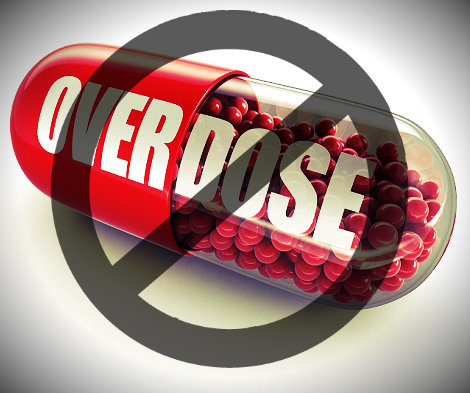 Naloxone is a drug that is related to opioids and that is capable of reversing the effects of certain opioids on the body. It can be used after surgery to reverse the effects of opioids given for pain and sedation. It can be given to infants born with a dependency on opioids. A mother’s drug use causes this and the Naloxone helps to relieve the infant’s withdrawal symptoms. For someone overdosing on an opioid, Naloxone can be injected with a needle or with an auto-injector, called Evzio. The auto-injector is similar to devices used for severe allergic reactions and can be used by anyone without medical training.
Naloxone is a drug that is related to opioids and that is capable of reversing the effects of certain opioids on the body. It can be used after surgery to reverse the effects of opioids given for pain and sedation. It can be given to infants born with a dependency on opioids. A mother’s drug use causes this and the Naloxone helps to relieve the infant’s withdrawal symptoms. For someone overdosing on an opioid, Naloxone can be injected with a needle or with an auto-injector, called Evzio. The auto-injector is similar to devices used for severe allergic reactions and can be used by anyone without medical training.
Naloxone Saves Lives
Naloxone has been successful in saving lives. The Centers for Disease Control and Prevention (CDC) reports that thousands of doses of Naloxone have been distributed in community groups dedicated to preventing overdose deaths. Because of this distribution, more than 10,000 people have been saved from life-threatening overdoses. Community groups, first responders and law enforcement officers are being given injectors in greater numbers to administer life-saving Naloxone.
Can Anyone Get Naloxone?
The important question for anyone who cares about an opioid drug abuser is about access to the overdose antidote. Emergency responders and police have them, and injection devices are easy to use. Can anyone get access to a Naloxone injector? Should you carry one with you to save your loved one’s life in the event of an unintentional overdose? Many advocates for greater access to the overdose antidote say yes.
Community programs are already working toward getting more Naloxone injectors into the hands of those who need it. It is a prescription medication, but it can be prescribed to anyone who is at risk of having an overdose. The reach of such community programs, however, is currently limited. These programs are run mostly through needle exchange programs and target inner-city heroin addicts. More access is needed in greater areas and for people abusing prescription painkillers, not just heroin. Support for expanding access is high, but funds are low.
To get a Naloxone injector for yourself or a loved one, you need to either find a community program near you that will distribute it to those in need, or find a physician willing to write you a prescription for one. If you don’t know where to start, speak to your primary care doctor for more information or referrals. Also keep an eye out for non-prescription Naloxone. Because of the great need for this life-saving drug, the Food and Drug Administration (FDA) is considering the development of an over-the-counter alternative.
Opioid addiction is a terrible disease. It can hook anyone and it can do so quickly. Getting over an addiction to an opioid is extremely challenging. Anyone abusing these drugs is at risk for an overdose. Dying from an overdose can even occur with the first use of one of these drugs. If you know someone who abuses any kind of opioid, the overdose antidote should be on your radar. Look into the possibility of getting access to the injector. It could save the life of someone you love.
08 Sep 2014
Straight-A Students And Substance Abuse
Countless parents have had this internal argument: My kid is a good kid. She gets all As at school. She’s an athlete. She couldn’t possibly be using drugs or drinking, right? Unfortunately, some of those parents are wrong. Good kids abuse substances too. Teenage experimentation with drinking or drugs doesn’t always look like the stereotypical burnout. All parents should be aware that substance abuse is everywhere and know the more subtle signs and symptoms.
Teens And Substance Abuse
The good news about teens abusing drugs and alcohol is that the trend is moving downward. Fewer teens drink, smoke, or use most illegal drugs than did a few years ago. Abuse of marijuana has been rising as the perceived risk of this drug goes down. Prescription drug abuse still makes up a significant part of teen substance abuse. Although use rates are declining for most drugs, many teens are still abusing substances and suffering the consequences. Nearly one-quarter of all high school seniors report having used marijuana in the last month, while 15 percent used a prescription drug non-medically.
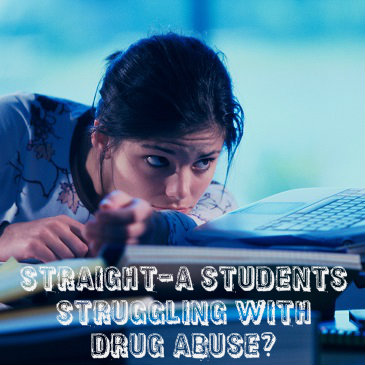 Numbers don’t lie. A lot of teens abuse substances. If you think that your teen is not using simply because she is a straight-A student or because she is popular and on sports teams, or because she is involved in several extracurricular activities, think again. No teen is exempt from the pressures that can lead to experimentation with drugs or alcohol, and many are good at hiding their substance abuse, especially from parents. Here are some of the more subtle signs to look out for in your teen:
Numbers don’t lie. A lot of teens abuse substances. If you think that your teen is not using simply because she is a straight-A student or because she is popular and on sports teams, or because she is involved in several extracurricular activities, think again. No teen is exempt from the pressures that can lead to experimentation with drugs or alcohol, and many are good at hiding their substance abuse, especially from parents. Here are some of the more subtle signs to look out for in your teen:
Teen Substance Abuse Signs
- Changes In Sleep Patterns: Drug and alcohol use impacts sleep in a number of ways. It can make someone sleep more or can lead to insomnia. Look for signs that your teen is staying up later than normal, sleeping in later than usual, or napping more frequently. Also be aware of any signs that she is often tired, such as yawning, bags under her eyes or sleeping in class.
- Missing Important Activities: If your teen is involved in a lot of activities, she may be able to drink or use drugs for a little while before it starts to impact them. Eventually, though, she will start to slide. It may be just a little bit at first. She might be late to one or two events when normally she is punctual. Maybe she decides to give up one of her less important activities.
- Physical Signs: Some of the effects of drug use can’t be covered up. Look for persistent coughing, bloodshot eyes, dilated or pinpoint pupils, an increased appetite, unsteadiness, unusually bad breath, unfamiliar smells or lethargy.
- Secrecy About Money: If your child has always been open about her money and what she spends it on, be concerned if she suddenly becomes secretive. If she doesn’t want you to see her bank account information or go through her purse, be aware that something may be up.
Good Students And Prescription Drugs
You may be right when you say that your straight-A teen would never drink, smoke pot or use street drugs to get high. What many parents of good students don’t realize is that certain prescriptions are abused for academic reasons. Prescription medications for ADHD are popular with ambitious students. These drugs are stimulants and high school and college students are abusing them in record numbers to stay awake and alert for studying and writing papers. Subtle signs of drug abuse in your teen may indicate she is using stimulants because of the pressure she feels to get good grades.
No matter how good your teen is or how successful she is in school, you cannot guarantee that she will not experiment with drugs or alcohol. Always be aware of the potential for abuse and spend time talking with your teen. Make sure she knows she can open up to you and you will be more likely to catch any problems before they go too far.
01 Aug 2014
How To Avoid Getting Hooked On Sleeping Pills
When most of us think about addiction, we envision someone shooting up heroin, smoking meth or drinking nonstop. Did you know that you can develop a dependence on drugs that seem much more harmless? We tend to think of prescriptions as safe because they are prescribed by doctors, but you should always be aware of the risks of any drugs you take. Sleeping pills are used commonly in the U.S. and it is possible to become addicted to them. If you need sleep aids, find out what the dangers are and learn how not to become dependent on them.
Can A Pill Cure My Sleeping Problems?
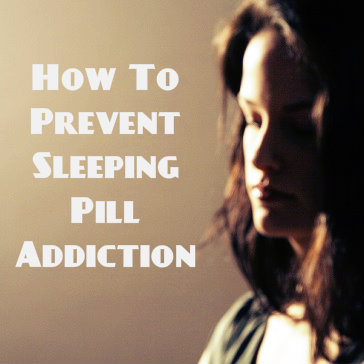 Too many people rely on sleep aids to get a good night’s rest without dealing with their underlying problems. Being unable to sleep is usually a symptom of another problem. You may struggle to sleep because you have another medical condition, but it’s more likely that your insomnia is related to stress. While a sleep aid may help you get some rest, it is not the answer to your problems. Sleeping pills are designed for short-term use, not for lifelong treatment.
Too many people rely on sleep aids to get a good night’s rest without dealing with their underlying problems. Being unable to sleep is usually a symptom of another problem. You may struggle to sleep because you have another medical condition, but it’s more likely that your insomnia is related to stress. While a sleep aid may help you get some rest, it is not the answer to your problems. Sleeping pills are designed for short-term use, not for lifelong treatment.
Are Sleeping Pills Addictive?
If you do use your sleep aid for a long period of time or if you deviate from your doctor’s instructions, you run the risk of experiencing side effects, of not solving the underlying problem causing insomnia and of developing a dependence on the medication. The risk level depends on the medication. Sleep aids include those that help you fall asleep and those that help you stay asleep through the night.
In the first category is Lunesta, which can cause withdrawal symptoms, and Halcion and Sonata, both of which are habit-forming. Among the drugs that can help you stay asleep all night are Estazolam and Restoril, both of which are also habit-forming. There are other sleeping pills that can be prescribed, which are not habit-forming and which do not cause withdrawal when you stop using them. Each one comes with its own list of side effects and some may not work well for you. Which one you take is a decision you and your doctor should make.
Some prescription sleeping pills are habit-forming, which means they are susceptible to abuse and can lead to addiction. Even with those medications that are not considered addictive, there is a risk of developing dependence. When you rely on a pill to get to sleep at night you may become psychologically dependent on it. The idea of not having that crutch to help you sleep can cause anxiety and lead you to keep using the medication, even when you no longer need it.
How Can I Take Sleeping Pills Safely?
The most important consideration in taking prescription sleep aids is to follow your doctor’s instructions. Speak up and discuss with your doctor if you feel like you are becoming dependent on your sleeping pill. Even over-the-counter sleep aids can lead to dependence if you are relying on them every night. If you need to take one for several nights in a row, talk to your doctor so that you can address the underlying reasons for your insomnia.
A sleep aid can be a good way to catch up on rest, but it is not a solution to your problem. Make sure that you get treatment for your insomnia. This may mean going through counseling to address any psychological issues keeping you awake, or trying natural methods or alternative medicine. Always take care when using prescriptions of any kind and keep yourself informed as to the risks and the possibility of dependency.
Opioid maintenance treatment is a form of addiction treatment that uses opioid-based medications as safer substitutes for heroin or other powerful opioid substances of abuse. The two medications typically used in this kind of treatment are methadone and buprenorphine. In a study published in March 2014 in the journal Addiction, a multinational German and Swiss research team explored the potential usefulness of an opioid medication called slow-release oral morphine as an alternative to methadone in opioid maintenance treatment. These researchers concluded that slow-release oral morphine appears to be at least as effective as methadone in treating people with opioid use disorder.
Opioid Use Disorder And Medications
 People affected by opioid abuse or opioid addiction can receive a diagnosis for a condition officially known as opioid use disorder. Some addiction programs use opioid-based medications as temporary treatments for this disorder in order to help their patients/clients avoid the immediate pitfalls of opioid withdrawal. Others use opioid-based medications as longer-term alternatives for people affected by opioid use disorder.
People affected by opioid abuse or opioid addiction can receive a diagnosis for a condition officially known as opioid use disorder. Some addiction programs use opioid-based medications as temporary treatments for this disorder in order to help their patients/clients avoid the immediate pitfalls of opioid withdrawal. Others use opioid-based medications as longer-term alternatives for people affected by opioid use disorder.
Both methadone and buprenorphine produce their drug effects inside the brain more slowly than heroin and other commonly abused opioid substances. In addition, they have a lower maximum effect than the typical abused opioid. During opioid maintenance treatment, doctors rely on these characteristics to introduce either methadone or buprenorphine as an alternative to the unrestrained drug intake associated with unaddressed opioid addiction.
When used in this context, both medications allow addicted users to gain control over their drug intake while simultaneously evading the onset of severe opioid withdrawal. Methadone has a stronger opioid effect than buprenorphine and comes in the form of tablets or oral solutions. Buprenorphine is often combined with a second non-opioid medication called naloxone (which helps reduce any risks for buprenorphine abuse) and comes in the form of a tablet or strip placed under the tongue.
Slow-Release Oral Morphine
Morphine is one of the primary mind-altering substances found naturally in a plant called the opium poppy, which acts directly or indirectly as the originating source of all opioid drugs and medications. Pharmaceutical companies throughout the world manufacture purified forms of this substance as treatments for certain forms of mild and severe pain, including surgical pain and the pain associated with various forms of cancer.
Some forms of morphine pass rapidly to the brain after entering the bloodstream and have a relatively short-term impact on the ability to experience pain. Other forms are designed to pass into the brain slowly over an extended period of time and provide longer-term pain relief. Slow-release oral morphine, also known as extended-release morphine, is a specific type of long-acting morphine commonly prescribed for the treatment of significant pain that doctors expect to continue for prolonged amounts of time.
Slow-Release Oral Morphine’s Usefulness In Opioid Maintenance Treatment
In the study published in Addiction, researchers from six German institutions and one Swiss institution used a project involving 157 German and Swiss adults affected by opioid dependence/addiction to examine the usefulness of slow-release oral morphine in opioid maintenance treatment.
All of these individuals previously received methadone as part of their treatment; for a total of 22 weeks, some of the participants received slow-release oral morphine instead of methadone. The researchers monitored each individual’s continuing involvement in heroin use with two weekly urine drug tests and compared the results of the tests gathered from the methadone users to the results of the tests gathered from the slow-release morphine users.
After completing their comparisons, the researchers found that the slow-release morphine users were slightly more likely to test positive for heroin use during treatment than the methadone users. However, the difference between the two groups was minor and insignificant. The methadone users also had somewhat higher chances of remaining active participants in opioid maintenance treatment than the slow-release morphine users. However, the researchers again characterized the differences between the two groups as negligible. In addition, the group using slow-release morphine did not experience serious opioid-related harm during treatment any more often than the group using methadone.
Benefits Of Easier-Access Morphine For Opioid Maintenance Treatment
The authors of the study published in Addiction concluded that slow-release morphine is apparently just as useful in opioid maintenance treatment as methadone. This is important, in part, because federal guidelines restrict the places in which recovering addicts can receive methadone-based treatment. The authors note that the usefulness of slow-release morphine depends upon the amount of the medication used during opioid maintenance. As a rule, the number of heroin-positive urine tests drops as the amount of slow-release morphine given to a patient/client increases.
If You Or A Loved One Is Struggling With An Addiction…Don’t Give Up, Help Is Waiting – Call Us Now
Stimulants are drugs that increase your metabolism, heart rate and blood pressure. They make you feel alert, keep you awake, can help you focus, and may cause you to lose your appetite and lose weight. Among drugs that are abused, the amphetamine class of stimulants is both popular and dangerous. In terms of methamphetamine vs. amphetamine, it can be difficult to distinguish between the two, yet there are important differences.
Amphetamine and methamphetamine are prescriptions that help many people, but which also have a high potential for abuse. Another member of this class of drugs, methcathinone, has no clinical use, but has been discovered by abusers and is growing in popularity. It is important to learn about these common, but dangerous stimulants, especially if you are the parent of teens.
Amphetamine vs. Methamphetamine
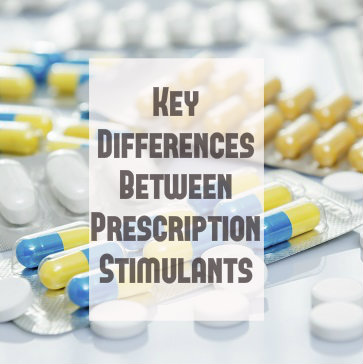 Amphetamine is a stimulant drug from which all other members of its group are derived. It is the base drug. As a stimulant, amphetamine acts on the central nervous system. It is most often prescribed for children with ADHD. It helps them to focus. Amphetamine is commonly abused by high school and college students as a study aid. It produces wakefulness and focus, which makes it a desirable tool for studying long hours. The risks, however, are great. Amphetamine causes side effects like nausea, headaches, shaking, insomnia, nervousness and more. It is also highly addictive.
Amphetamine is a stimulant drug from which all other members of its group are derived. It is the base drug. As a stimulant, amphetamine acts on the central nervous system. It is most often prescribed for children with ADHD. It helps them to focus. Amphetamine is commonly abused by high school and college students as a study aid. It produces wakefulness and focus, which makes it a desirable tool for studying long hours. The risks, however, are great. Amphetamine causes side effects like nausea, headaches, shaking, insomnia, nervousness and more. It is also highly addictive.
Methamphetamine is similar to amphetamine. Like amphetamine, it is a stimulant that increases wakefulness and alertness. It is less often prescribed for ADHD and in rare cases can be used to treat obese patients. Methamphetamine is prescribed less often than amphetamine because it is more harmful. It can cause lasting damage in the brain with long-term use and is extremely addictive. Because prescriptions for methamphetamine are scarcer, users often get it from amateur meth labs. Abusers of meth use it to get a high rather than to study.
Methcathinone vs. Methamphetamine
Another member of the amphetamine stimulant class of drugs, methcathinone, is similar to methamphetamine. Unlike meth, however, it has no clinical use. It is a Schedule I drug in the U.S. because it is dangerous and addictive. It is not prescribed to treat any medical conditions. Methcathinone is chemically very similar to methamphetamine and is also a stimulant.
Like both amphetamine and methamphetamine, methcathinone suppresses the appetite, increases wakefulness, heart rate and energy, and produces alertness in the user. The sense of euphoria that also comes with taking the drug is the main reason people abuse it. The feeling is described as being less intense than that imparted by methamphetamine. As with methamphetamine, methcathinone causes long-term damage and is highly addictive.
All members of the stimulant class of drugs have potential for abuse, but amphetamine, methamphetamine, and increasingly methcathinone are among the most common. Teens and young adults are often drawn to these drugs for either the high, the potential for a study aid, or both. Adults and parents should be aware of these drugs and the harm that they can cause.
If You Or Someone You Love Is Struggling With Stimulant Abuse, Call Us Now – Help Is Available 24/7
The problem of prescription drug abuse is one that touches almost everyone in some way. Millions of Americans have abused prescription drugs and are at risk of becoming addicted or even of having a fatal overdose. Teens are particularly vulnerable and don’t always understand the dangers associated with prescriptions. Teens today are abusing prescription drugs in greater numbers than any other age group. Learn how to keep your teen safe in the face of this epidemic.
Which Drugs Are Teens Abusing?
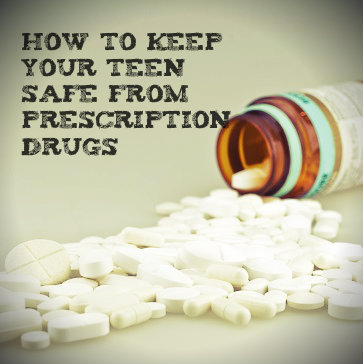 Teens are abusing prescription painkillers in record numbers. These are narcotic controlled substances and are highly addictive and easy to overdose on. In the last 20 years, the number of people between the ages of 12 and 17 that abuse these painkillers has increased ten-fold. No teen demographic is excluded from these statistics. Teens from all socioeconomic backgrounds, of all races, and of both genders are abusing painkillers.
Teens are abusing prescription painkillers in record numbers. These are narcotic controlled substances and are highly addictive and easy to overdose on. In the last 20 years, the number of people between the ages of 12 and 17 that abuse these painkillers has increased ten-fold. No teen demographic is excluded from these statistics. Teens from all socioeconomic backgrounds, of all races, and of both genders are abusing painkillers.
The other category of prescription drugs being abused by teens is stimulants. Stimulant medications are typically amphetamines prescribed for children with attention deficit hyperactivity disorder, or ADHD. Teens abuse them mostly as study aids. They have the effect of keeping the user awake and allowing for more focus and concentration. In a competitive academic world, many teens turn to these drugs to get better grades. The risks are high, of course, and include addiction, long-term health consequences and overdose.
How Can I Keep My Teen Safe From Prescription Drugs?
One of the scariest aspects of the trend in teen prescription drug abuse is that parents are largely unaware of the problem. As many as one in ten teens abuses stimulants, yet most parents have no idea what’s going on. How can you keep your teen safe when you don’t know there is a problem? The first thing you can do to protect your teen is to get to know his activities. By developing an open, communicative and trusting relationship with your teen you will be better tuned in to what is going on with him. You will be more likely to notice if something seems off, which could be attributed to drug abuse.
As you educate yourself about prescription drug abuse, also educate your teen. Knowledge is power and many teens abuse these drugs thinking that they are mostly harmless. If doctors prescribe them, sometimes even to kids, they must be safe, right? This attitude is dangerous. Learn about the risks of taking these medications without a doctor’s supervision and share what you learn with your teen.
It is also important that you minimize your teen’s access to drugs. There are many reasons teens abuse drugs, but one reason they may turn to these prescriptions more than most other substances is access. Most people abusing prescription drugs get them from a friend or family member. If anyone in your family has been prescribed a painkiller or stimulant, make sure it is kept in a secure location that your teen cannot access. Teens also get prescriptions from illegal online pharmacies that don’t check for prescriptions. Control your teen’s access to the Internet and check his history from time to time.
The problem of prescription drug abuse is a serious and ongoing one, for both adults and teens. To keep your teen safe from the epidemic of prescription abuse you need to be aware and knowledgeable. Talk to your teen and make sure he knows that he can come to you with problems. Discuss the risks of abusing drugs and restrict his access to them; take these important steps to reduce the chances that he will experiment with prescriptions.
If You Suspect Your Teen Is Abusing Prescription Drugs – Don’t Hesitate – Call Us Now!
19 Jun 2014
What’s The Deal With Seniors And Drug Abuse?
Thinking about drug abuse, you probably picture younger people popping pills, shooting up or smoking. What is difficult is to imagine is that there is a rising problem among older adults when it comes to drug abuse. The main culprits are prescription medications. Just because a doctor prescribes them does not mean these drugs are always safe. Many prescriptions are susceptible to abuse and it is not only younger people who have used them inappropriately. In fact, surveys show that abuse among older Americans is on the rise. If you care for an older family member be aware of the issue so you can intervene if necessary.
What Are The Dangers For Seniors Abusing Prescriptions?
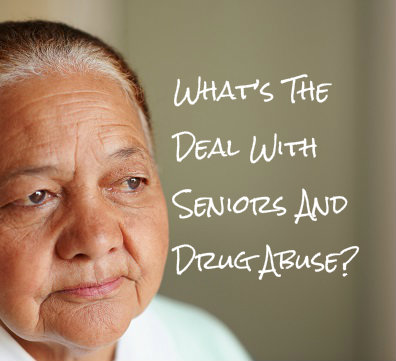 There are several prescription medications that people abuse because of the feelings they impart. For many, the abuse starts slowly and seems harmless. Just how dangerous are these medications when taken against a doctor’s direction? It depends on the medication, but with any drug the side effects will be amplified and intensified when more than the recommended dose is taken.
There are several prescription medications that people abuse because of the feelings they impart. For many, the abuse starts slowly and seems harmless. Just how dangerous are these medications when taken against a doctor’s direction? It depends on the medication, but with any drug the side effects will be amplified and intensified when more than the recommended dose is taken.
For seniors there are particular risks associated with abusing medications. Your older loved one is likely taking several medications. When she abuses one or more of them she increases the risk of a dangerous interaction between two or more medications. She may also have more health problems that could be exacerbated by taking too much of one medication. Of course, at any age there is the very real possibility that drug abuse could lead to addiction.
Which Prescriptions Are Addictive?
Any medication that has addictive potential can be abused. These drugs all give the user a pleasant feeling, which is why they can lead to dependence. Be aware of the medications your loved one is using and educate yourself as to their risks and addictive potential. There are three main classes of drugs that are most often abused: depressants, stimulants and opioids.
Depressants, also known as sedatives, have a relaxing effect on the body. For seniors, the most likely type of depressant to be prescribed is a sleep aid. Stimulants have the opposite effect. They cause wakefulness and alertness and are most commonly prescribed as ADHD medications. Your older friend is unlikely to be prescribed a stimulant. Of greatest concern may be the opioids. These are painkillers that also produce a high when taken in larger doses. Codeine, morphine, oxycodone, hydrocodone, fentanyl and hydromorphone are examples of prescribed opioids.
What Are The Signs Of Abuse?
If you have an older adult in your care, or are concerned about a parent or friend who takes prescription medications, watch out for signs of drug abuse. Look for signs of intoxication. For example, if she slurs her speech, stumbles or falls more often, or if her behavior in general seems off to you, she may be under the influence.
Also look for other signs that may be subtler, such as changes in behavior or routine. She may experience a change in sleeping habits or appetite as a result of abusing medications. You may also observe increasing irritability or confusion. She may act suspiciously as well. For instance, she might make multiple appointments with different doctors in order to get more prescriptions or start going to different pharmacies to avoid suspicion.
Some of these signs of drug abuse may also indicate a new or worsening health problem. In either instance, you should be concerned for the senior in your care. Start a conversation with her and encourage her to see her doctor to discuss options for dealing with the issue.
Read More About Seniors And The Surge In Substance Abuse – And Help Your Loved One Today!
The phrase older and wiser suggests that as a person ages they learn a lot about how to deal with life. Experience is a profound teacher. However, it’s also true that as a person enters their golden years they are entering new territory. The retirement years are full of all kinds of changes and challenges. Sometimes there are so many of them that seniors are left scrambling for a way to cope.
Older People And Life Challenges That Effect Drug Abuse
 The American Geriatrics Society reports that older adults may be more apt than others to form a substance addiction by virtue of the many life challenges they encounter. Loneliness, grief, lack of purpose, boredom and chronic pain confront seniors with full force. As many as 20 percent of senior citizens msuse or abuse their prescription drugs or alcohol.
The American Geriatrics Society reports that older adults may be more apt than others to form a substance addiction by virtue of the many life challenges they encounter. Loneliness, grief, lack of purpose, boredom and chronic pain confront seniors with full force. As many as 20 percent of senior citizens msuse or abuse their prescription drugs or alcohol.
Alcohol – Most Abused Substance By Seniors
The substance most often abused by seniors is alcohol, with 60 percent of addiction treatment admittances for older adults relating to alcohol use. According to the Substance Abuse and Mental Health Administration (SAMHSA), 5.5 million seniors struggle with an alcohol use problem. This is in part because alcohol is a socially acceptable mode of self-medication.
But for seniors, drinking too much alcohol can have serious consequences. The truth is that alcohol affects older bodies more than younger ones. The senior’s body is slowing down in every way, including metabolism. That means that alcohol is processed much more slowly in an older person’s body. Because of this the National Institute on Alcohol Abuse and Alcoholism recommends that adults age 65 or above consume no more than one alcoholic beverage per day.
Older People Abusing Prescription Drugs
Prescription drugs are another source of potential abuse for seniors. To begin with, senior citizens are prescribed more medication than any other age group of Americans. But just as with alcohol, medications are also metabolized more slowly by older bodies.
Sedatives (barbiturates, diazepam, chlordiazepoxide) used to help older patients sleep are highly addictive. These medications tend to store up in fat deposits which make their effects even longer-lasting in older bodies which typically carry more fat. This is no small problem with the diazepam drug Valium prescribed to 100,000 older Americans annually.
Seniors Abusing Illegal Substances At A Greater Rate?
More people over age 50 are using illegal, illicit drugs. SAMHSA reports that treatment admittances for patients over 50 addicted to illegal drugs doubled and has continued to rise.
The good news in all of this is that when addiction forms late in life, with intervention and treatment there is hope for recovery.
See That There Is Hope For Recovery For YOU!
If You Or Your Elderly Loved One Need Help With Drug Or Alcohol Abuse – Call Us Now – We Are Here To Help!


